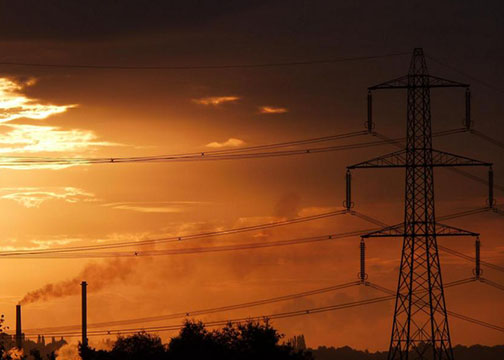Originally Published by Joanna Foster, Climate Progress
**
The Environmental Protection Agency (EPA) has, at long last, published its rule to limit carbon emissions from new power plants. The proposed rule appeared Wednesday in the Federal Register, four months after EPA Administrator Gina McCarthy announced it back in September.
The regulation mandates that all future coal plants can emit just 1,100 pounds of carbon dioxide per megawatt-hour. An average U.S. coal plant currently dumps over 1,700 pounds of carbon dioxide into the atmosphere for every megawatt-hour of energy it produces. The rule also covers new natural-gas fired plants. Natural gas plants, 100 megawatts or larger, will be limited to 1,000 pounds of carbon dioxide per megawatt-hour, while smaller plants could emit no more than 1,100 pounds.
Modern combined-cycle natural gas plants are essentially already able to meet this standard. The rule, will however, make it very difficult for new coal-fired power plants to be built in the United States. Utilities will only be able to build new coal plants if they are able to capture 20 to 40 percent of the carbon they emit and store it underground. This technology is known as carbon capture and storage (CCS). Many coal advocates in Congress and fossil-fuel industry leaders have argued that the standard is designed to nix new coal plant construction, claiming that the CCS technology needed to meet the standard simply isn’t ready for commercial deployment.
In a statement, Sen. John Barrasso (R-Wyo) said that the EPA’s rule would be damaging to the economy.
“The EPA just announced another regulation that will increase poverty in coal country,” Barrasso said. “In addition to contradicting current law, this new regulation will put more Americans out of work and make it even harder for people to provide for their families.”
The EPA argues that the rule will spur investment in developing the technology.
The coal industry has been talking about “clean coal” for decades. The Massachusetts Institute of Technology reports that there are 24 large-scale CCS power projects worldwide, seven of which are in the United States and Canada. Southern Company is building a 582-megawatt Integrated Gasification Combined Cycle, or IGGC, plant in Kemper County, Mississippi, that will capture 65 percent of its carbon pollution. The plant should go online this year. There’s also Summit Power’s Texas Clean Energy Project, or TCEP—a 400-megawatt IGCC facility, just beginning construction, that will capture 90 percent of its carbon pollution.
Very few new coal-fired power plants were being planned by utilities even before this proposed rule. For years, now, natural gas has been edging coal out as a cheaper alternative. Wind and solar generation have also been booming in recent years.
While the new rule may have little on-the-ground, immediate effect on greenhouse gas emissions, given the current energy landscape, it marks a huge milestone in a decades long fight by environmental groups to make the EPA regulate carbon dioxide the same as any other dangerous air pollutant. In 2007, the Supreme Court, after years of previous litigation, ruled in Massachusetts v. EPA that greenhouse gases could constitute pollutants under the Clean Air Act and that the EPA was required to regulate them if they were found to endanger human health and welfare. Two years later, the EPA released its Endangerment Finding, that found exactly that. Then in 2010, the Sierra Club, the Natural Resources Defense Council, the Environmental Defense Fund and a collection of states led by New York negotiated a settlement agreement with the EPA. After the fuel economy standards were settled for vehicles, the EPA agreed to propose greenhouse gas performance standards for new and existing power plants. The first standards for new power plants were proposed back in April 2012, but were never finalized.
After President Obama’s June 2013, climate action plan announcement, he sent a memorandum to the EPA, setting a strict schedule for issuing greenhouse gas performance standards for new and existing power plants, including the re-proposal of the new source standard which finally appeared in the Federal Register this week.
Next, the EPA must draw up standards for the thousands of existing power plants — some 6,500 — which to date have been completely free to pollute the atmosphere with carbon dioxide. Those power plants are responsible for about 40 percent of U.S. carbon dioxide emissions. The rule on new power plants sets the legal foundation for this much bigger move.
“It’s important because it establishes the form that these regulations will take,” explained John Coequyt, who works on the Sierra Club’s Beyond Coal Campaign in a phone interview. “It is the legal precedent. It shows that the Administration is going to meet the timeline it established and is going to move forward. It’s a clear signal that they are serious about finally addressing carbon pollution from power plants.”
“The Administration set the bar high when they said that the point of the Presidents climate action plan was to meet the 17 percent economy-wide target that Obama set in Copenhagen,” Coequty added. “We believe that the power sector needs to reduce emissions by about 25 percent from 2012 levels to achieve that. We look forward to seeing what the EPA proposes this summer for existing power plants.”
Wednesday’s publication in the Federal Register of the emissions rule for new power plants kicks off a 60-day comment period on the proposal. Legal challenges from industry have already been promised.
Photo credit: langleyo, Flickr



